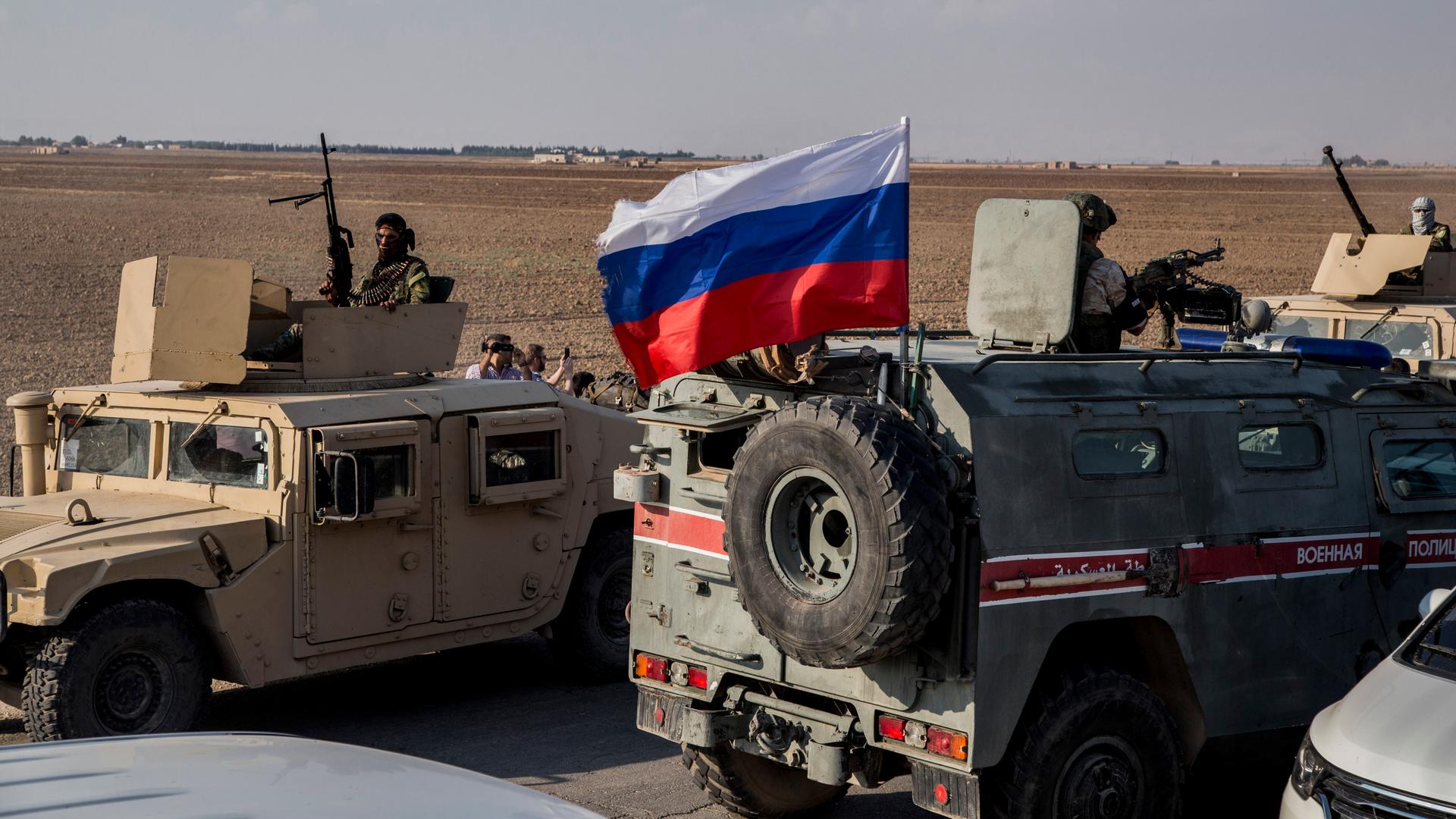The Syrian regime and Russia were under the impression that the YPG is on the ropes, but that turned out to be a strategic miscalculation as the YPG is still unwilling to make major concessions. This means the YPG-Syrian regime deal is falling apart.
When the US pulled out of Syria without adequately coordinating with its NATO ally Turkey, people in the Kremlin may have been filled with joy and euphoria. The short-sighed policies of CENTCOM officials in Syria have not only caused a major dispute within NATO but also resulted in the pullout of the Americans from the country.
Seeing the mess in Syria, Moscow calculated asserting its control over northeast Syria and the oil resources by imposing the Syrian regime upon YPG elements and limiting Turkey and the Syrian National Army.
However, strategic steps by Ankara, the last-minute policy change in Washington, the YPG’s unwillingness to disband itself and the limits of the Syrian regime and Russian capacities restricted Russia from achieving its ambitions. This reality check has led the Russian to punish the YPG, the Syrian branch of the PKK.
When Trump announced the US withdrawal from Syria at the end of 2018, I had a long conversation with a Russian source who argued that Moscow would use the Turkish pressure to extract substantial compromises from the YPG and will impose the regime over all of the east of the Euphrates. I told him that no one knows the PKK better than Turkey, ergo, the Russian strategy would not work.
Days after, the YPG published its list of demands which basically asked for an autonomous region in northeast Syria. The Russians were angry but thought that it was a result of Trump signalling to reverse his withdrawal decision. Then almost a year later, when the Americans had finally withdrawn, the Turkish Armed Forces and the Syrian National Army crushed the military power of the YPG in northeast Syria, Moscow and the Assad regime found that their assessment of the YPG was misplaced.
After a deal between the Assad regime and the YPG, the regime forces entered the border areas and frontlines in northeast Syria. The regime positioned itself at the border around Ayn al Arab and west of Qamishli. Additionally, regime forces engaged in active combat against the Syrian National Army forces near Tal Tamer and near Ayn Issa.
On October 30, the Assad regime officially called upon YPG fighters to join regime forces saying that fighters could be employed within the army structures and asayish forces could become police units. The YPG declared that they reject such calls and demand a political settlement – a wake-up call for many in Moscow.
The YPG lost its American protection and were facing Turkish Armed Forces and the Syrian National Army with no real prospects for survival, but still took a maximalist position with Syria and Russia.
The Russian side has made a strategic miscalculation. The YPG is not a realist actor and consists of leading figures that have spent their lives in the mountains conducting a terror campaign against Turkey to achieve their dreams of a ‘communist Kurdistan’. A military setback will not deter them from pursuing their aims.
In addition to the YPG’s ideological approach, the dynamics in Syria have also shifted against Moscow. The Turkish president, through a complicated negotiation process—supported by military power on the ground—has managed to secure a strong position for Turkish demands in which Russia can’t afford a confrontation with Turkey and is obliged to find a middle way. This middle way was signed in the Sochi summit, but it gave Turkey a superior position to enforce something on Russia when needed.
The deal in Sochi was based on the Russian assumption of goodwill from the YPG. The Assad regime and the Russian army in Syria don’t have the capacity and capability to enforce such an agreement in the region.
While Turkey had not relocated any fighters from Idlib to northeast Syria and the frontlines in Idlib are still fragile, the regime could not deploy enough forces to northeastern Syria. The regime was forced to send ill-equipped and ill-trained militias to northeast Syria that proved its impotence in its first encounter with the Turkish-trained and equipped Syrian National Army.
However, the biggest frustration that Moscow and the Assad regime face is located elsewhere: the Al-Omar oilfield. The decision by the Trump administration to secure oil in the Arab-populated and the regime-unfriendly region has been a major strategic decision within the Syrian context. It denies the regime valuable resources it needs to finance its military campaign and to make its deployment in northeast Syria sustainable.
Additionally, the regime-unfriendly Arab tribes of Deir Ezzor continue to pose a risk to the regime, and the frontline of Deir Ezzor still needs to be manned. All of this is almost a mission impossible given the regime’s manpower and weak financial standing.
Recognising its strategic miscalculation in Syria and regards to the YPG, the Russians and the Assad regime seems to have decided to punish the YPG by withdrawing their troops and enabling a further push by the Syrian National Army against them.
The message is clear: “If you deny us the oil, we will deny you protection.”
Author: Omer Ozkizilcik
Omer Ozkizilcik is an analyst for the SETA Foundation and is an editor at Suriye Gundemi.
Source










Discussion about this post